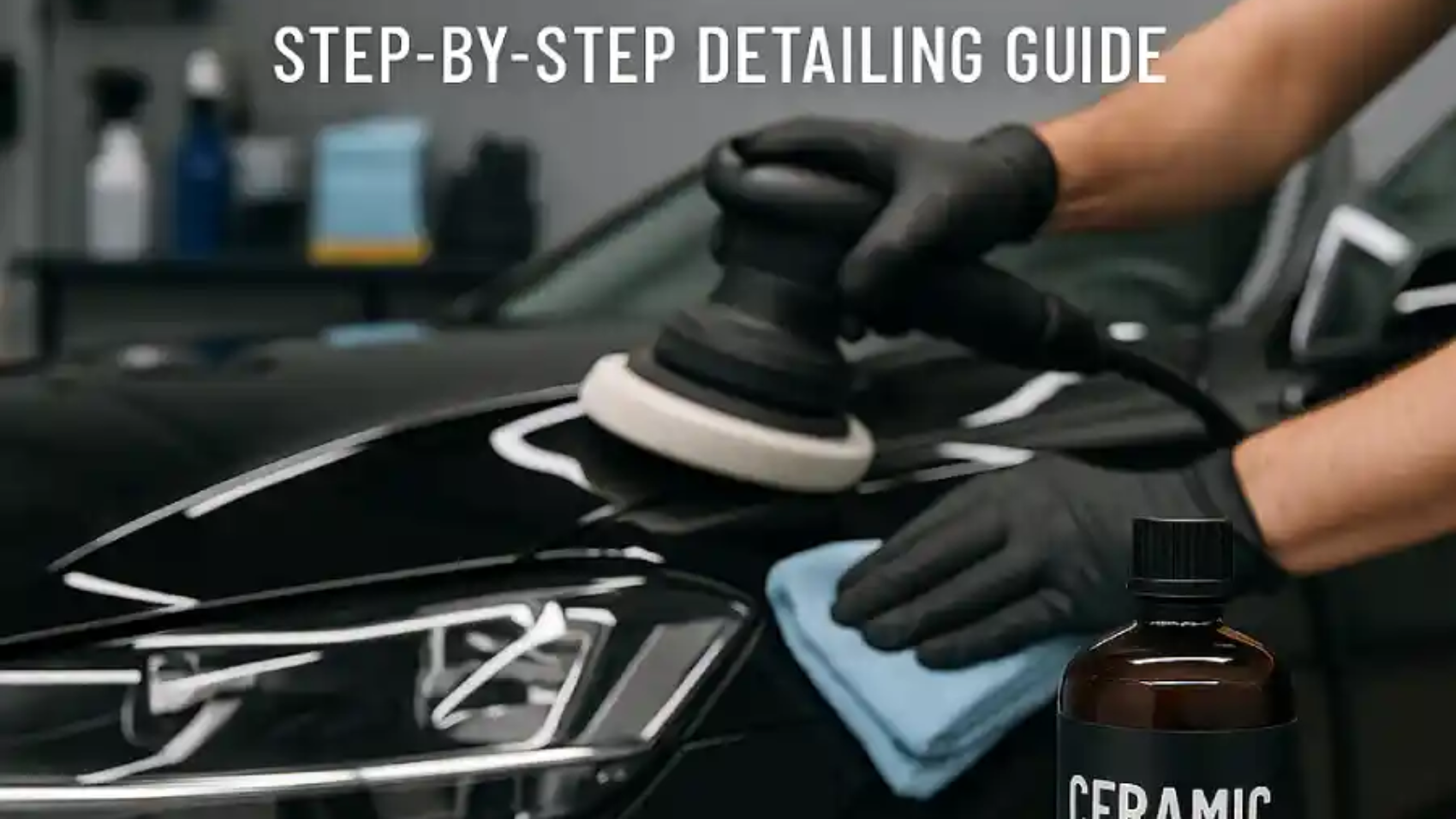Key Takeaways:
- Proper preparation is crucial for a successful ceramic coating application.
- Thorough cleaning, paint correction, and decontamination are essential steps.
- Attention to detail in preparation will significantly impact the coating’s longevity and appearance.
Importance of Preparing Your Car for Ceramic Coating
Applying a ceramic coating to your car can significantly enhance its appearance and protect its exterior surfaces from various environmental hazards. However, achieving the best results requires thorough preparation. This guide outlines the steps to prepare your car for ceramic coating, ensuring the result is as stunning and practical as possible.
Preparation is the foundation of a successful ceramic coating application. A well-prepared surface ensures that the coating bonds effectively, providing maximum protection and gloss. Knowing how to prepare your vehicle properly is crucial if you’re considering a ceramic coating for cars in Paramus, NJ, or anywhere else. Going through an intensive prep process not only enhances the durability of the coating but also elevates the overall appearance of your vehicle, allowing the perfect surface to come through.
Initial Cleaning of the Vehicle
The first step in the preparation process is thoroughly washing the car. This involves using a high-quality car shampoo to eliminate surface-level dirt, grime, and contaminants. Begin by rinsing the car to remove loose debris, then apply the car shampoo using a wash mitt in a top-to-bottom motion. Focus on hard-to-reach areas such as the wheels, bumpers, and undercarriage. It’s essential not to use dish soap, as it can strip away essential car waxes and sealants. This initial cleaning phase is critical when searching for an automotive ceramic coating near me, as no coating can adhere properly to a dirty surface.
Decontamination Process
After thoroughly cleaning the car, the next step is to decontaminate the paintwork. This involves two key elements: chemical decontamination and mechanical decontamination. Chemical decontamination includes using a specially formulated iron or tar remover to lift embedded contaminants like metal particles from the surface. Spray the solution evenly and allow it to dwell for a few minutes before rinsing thoroughly. Mechanical decontamination, often called “clay bar treatment,” involves using a clay bar to remove bonded particles that chemicals alone cannot physically dissolve. Glide the clay bar gently over lubricated surfaces to pick up any remaining contaminants, ensuring a spotless finish.
Conducting Paint Correction
Paint correction is a significant part of preparing a vehicle for ceramic coating. This process addresses defects such as swirl marks, scratches, and oxidation, which can affect the coating’s appearance and effectiveness. Start with a paint inspection under direct light to identify imperfections. Using a dual-action polisher with cutting and finishing compounds, carefully work through each panel, erasing blemishes and restoring the paint’s natural luster. Paint correction can be time-consuming, but it is critical for creating a flawless surface that enables the ceramic coating to adhere correctly and deliver its protective properties effectively.
Final Preparation Steps
After paint correction, the last preparatory step involves a final inspection and wipe-down. Use an isopropyl alcohol (IPA) mixture to remove any oil or polish residue left on the car’s surface. The IPA solution should be diluted appropriately to ensure it doesn’t harm the paintwork. This step ensures an immaculate surface, which is crucial for the ceramic coating to bond correctly. Carefully inspect the car under various lighting conditions to ensure no residues or imperfections remain. Take this opportunity to mask off trim and sensitive areas to prevent the ceramic coating from adhering to unwanted regions. By ensuring every detail is addressed, the vehicle is perfectly primed for the final application.
Ensuring Long-Lasting Results
Proper preparation is essential for a successful ceramic coating application. Investing time in meticulous cleaning, decontamination, paint correction, and final preparation ensures that your vehicle is in optimal condition to receive the coating. This groundwork not only enhances the life and effectiveness of the ceramic coating but also elevates the car’s overall appearance, protecting it from environmental hazards for years to come. Following these steps, you’ll maximize the benefits of ceramic coating and enjoy your vehicle’s enhanced look and protection.

